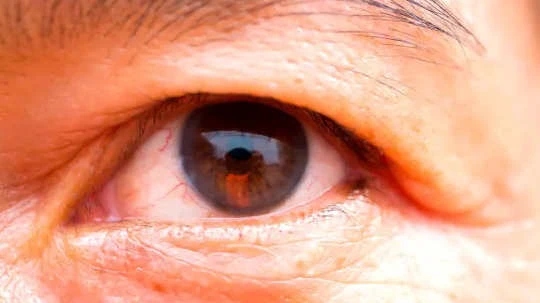Have you noticed yellow deposits around your eyelids off late? According to experts, these can be a side effect of having high levels of lipids or cholesterol levels in your blood.
Your body needs some cholesterol – a kind of fat, to function properly. However, having too much of this can negatively affect your health – causing heart diseases like heart attacks and strokes.
According to experts, xanthelasma – or yellow spots may not be harmful initially, but they can gradually worsen and cause pain. They may also be a sign of a more serious underlying health problem and even lead to permanent blindness.
What is xanthelasma?
Xanthelasma is usually made of fatty material accumulated under the skin on the inner parts of your upper and lower eyelids. These would appear symmetrically between your eyes and nose.
According to doctors, initially, xanthelasma would not impair the function of your eyelids, however, they gradually become larger over time and cause discomfort.
Studies say more than half of the people who have xanthelasmas have high cholesterol which is common in females of Asian or Mediterranean descent.
Experts say even though anyone can get cholesterol deposits around their eyes, the condition is most common in people with a lipid disorder – dyslipidemia. You may have dyslipidemia if you have any of the following conditions:
- Hypercholesterolemia, in which total cholesterol is greater than 200 milligrams per deciliter 2
- Hypertriglyceridemia, which is identified by triglycerides above 150 mg/dL
- High levels of LDL, also known as bad cholesterol
- High levels of HDL, also known as good cholesterol
What causes xanthelasma?
According to doctors, various factors can cause you to have too many lipids in your bloodstream, some of which include:
Genetic issues can be because of a deficiency of familial lipoprotein lipase – the enzyme that breaks down lipids and a hereditary condition known as familial hypertriglyceridemia which causes people to have higher amounts of triglycerides in their blood.
A few other factors include:
- Drinking too much alcohol
- Sedentary lifestyle
- Weight gain and obesity
- Consume a diet low in fibre
- Smoking
- Medications like beta-blockers
Doctors also say conditions like kidney disease, thyroid, and diabetes can contribute to the development of cholesterol deposits since these conditions can shoot up lipid concentration in your blood.
Ways to treat cholesterol deposit around your eyes
According to experts, these cholesterol deposits can be removed through the following ways:
Surgical excision
Doctors use a very small blade to remove one of these growths, and you may recover within four weeks.
Chemical cauterization
This method uses chlorinated acetic acids and removes the deposits without leaving much scarring.
Cryotherapy
It is used repeatedly to destroy xanthelasma, however, carries the risk of scarring and changes to the pigment of your skin.
Carbon dioxide and argon laser ablation
This is less invasive than surgery and has a reasonable success rate. However, it carries the risk of pigmentation changes.
Electrodesiccation
This method can be used with cryotherapy.
Other signs of high cholesterol
A few other signs of high cholesterol that can cause permanent blindness include:
Renal vein occlusion
It is caused due to blockage in your arteries or veins when the blood flow to the retina gets stopped.
Arcus Senilis
This also indicates high cholesterol in which blue, white, or light gray rings form around the outside of the front of your eye as more cholesterol reaches the cornea.
Retinal Vein Occlusion
When your retina vein becomes blocked, it causes a retinal vein occlusion, causing blindness and leading to stroke.
Ways to reduce cholesterol
To naturally reduce your cholesterol levels, you can undergo a few lifestyle changes that can manage lipids in your bloodstream. A few of them include:
- Evaluate your diet and incorporate fruits and vegetables, along with grains and dairy foods
- Limit the amount of saturated fats you eat to fewer than 9 per cent of your daily calorie intake.
- Eat more protein, especially plant protein that contains fewer calories and lower fat
- Reduce alcohol intake
- Quit tobacco
- Eat a moderate number of calories from monounsaturated and polyunsaturated fats.
- Participate in 30 minutes of moderate-intensity exercises


